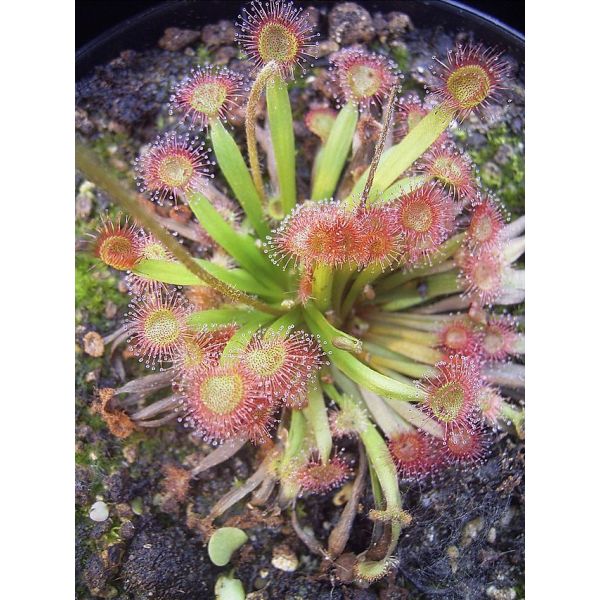Drosera Kenneallyi Seeds
Drosera Kenneallyi Seeds
The plant is very suitable for a terrarium or a warm greenhouse...

Delivery
All orders shipped with UPS Express.
Always free shipping for orders over US $250.
All orders are shipped with a UPS tracking number.
Returns
Items returned within 14 days of their original shipment date in same as new condition will be eligible for a full refund or store credit.
Refunds will be charged back to the original form of payment used for purchase.
Customer is responsible for shipping charges when making returns and shipping/handling fees of original purchase is non-refundable.
All sale items are final purchases.
Help
Give us a shout if you have any other questions and/or concerns.
Email: contact@domain.com
Phone: +1 (23) 456 789
Availability: Out of stock
SKU
Drosera Kenneallyi
Drosera Kenneallyi is a carnivorous plant native to Western Australia.
The species was collected for the first time in 1982 by Kevin F. Kenneally and was then named after him.
Drosera Kenneallyi is a reddish , fibrous-rooted perennial that grows in sandy loam, skeletal soils and on the margins of swamps. The tiny paddle-like hairy leaves are covered with drops of sticky goo, which trap insects that are attracted to the plant.
In summer the sundews are topped with thin spikes holding small white flowers.
The rosette-forming sundew has red carnivorous leaves at the end of the petioles. Inflorescences are 12.5?20.5 cm (5?8 in) long with white flowers that appear from November to December. With its tropical origin, Drosera Kenneallyi is to keep warm all year round. The plant needs plenty of light, full sun is recommended.
The plant is very suitable for a terrarium or a warm greenhouse. In its natural habitat, the plant covers dormancy during the dry period. Dormancy is not required in culture; however, you can allow dormancy by providing cool and dark. You will see the plant petioles becoming shorter and shorter (do not let the pot dry out completely!). The plant can then slowly get back more water after dormancy.
Hardiness zone: 11
| Label | Drosera kenneallyi |
|---|---|
| Common name | Sundew |
| Family | Droseraceae |
| Genus | Drosera |
| Species | Drosera kenneallyi |
| Germination | Sprinkle the seeds on the surface of a moist peat-sand mixture. Press onto the seeds. Try to spread the seeds around the entire surface of the pot. Do not bury the seeds or they will not germinate. Provide a warm and humid environment (at least 25 better 30øC). The seeds germinate usually within 3 weeks. The seedlings should be kept during the first weeks in high humidity. The seedlings grow very slowly and are often subjected to fungal infections, so they should not be kept too wet. |
| Price View | Price Range |

